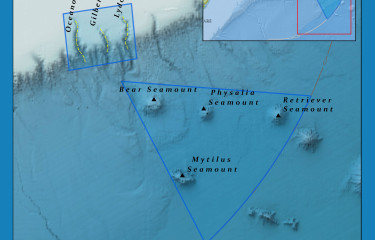Fishermen from the U.S. states of New Jersey and Massachusetts have once again filed a lawsuit challenging the creation of the Northeast Canyons and Seamounts Marine National Monument.
The national monument was first established by former U.S. President Barack Obama in 2016, who created the nearly 5,000-square-mile monument in the Georges Bank area of the Northwest Atlantic Ocean via executive order. The monument effectively banned commercial fishing in the area, with only red crab and lobster fishermen allowed to use the area – with plans to phase out that fishing by 15 September, 2023.
Since its creation, the monument has been the subject of controversy, with fishermen launching an unsuccessful challenge of the monument's creation. Their subsequent appeal of the decision was denied. Over a year later, the U.S. Supreme Court also opted against taking up the case.
However, in 2020, then-U.S. President Donald Trump issued his own proclamation reopening the monument to commercial fishing, a move which itself was the subject of lawsuits from conservation organizations. Then, matters were complicated even further when U.S. President Joe Biden announced, just hours after taking office in January 2020, he was planning a review of the Trump administration’s actions on a number of national monuments. Fishing advocates quickly mobilized to try and prevent the reestablishment of the marine monument, but didn't succeed, as the monument's boundaries and fishing limits were restored in October 2021.
Now, fishermen are taking the matter back to court, with the Pacific Legal Foundation once again taking the lead on the lawsuit. Its argument is much the same as it was in its previous suit: The creation of the monument counts as abuse of the Antiquities Act.
“The creation of the Northeast Canyons and Seamounts Marine National Monument violated the core requirements of the Antiquities Act to limit protections to specific monuments,” Pacific Legal Foundation Attorney Frank Garrison said. “Most fundamentally, the act gives the president authority to create monuments on federally owned or controlled land. The ocean is not land. Presidential action that goes beyond laws passed by Congress undermines the democratic process and the Constitution’s separation of powers.”
The Pacific Legal Foundation argues the monument is an overreach of executive authority based on an overly expansive reading of the Antiquities Act, which gives the U.S. president the ability to establish national monuments.
“That act authorized the president to protect historic or scientific monuments, but the designation must be limited to the protection of the monument itself,” the foundation said. “The president does not have the authority to prohibit commercial fishing across 5,000 square miles of ocean.”
The lawsuit states that the plaintiffs of the case, fishermen Patrick Fehily and David Malley, “earn their living” through fishing in the Atlantic Ocean, and that the monument closing off an area of the ocean to fishing is “threatening these fishermen’s way of life.”
If the lawsuit once again makes it to the U.S. Supreme Court, it may have a better chance at being heard. In the court's decision two years ago, U.S. Supreme Court Chief Justice John Roberts strongly hinted at the court welcoming future challenges to the monument.
“We may be presented with other and better opportunities to consider this issue without the artificial constraint of the pleadings in this case," he wrote.
A subsequent study of the monument found that the prohibitions on fishing in the area had little to no negative impact for the squid, butterfish, mackerel, and tuna fisheries in the area. The study, "Fishing activity before closure, during closure, and after reopening of the Northeast Canyons and Seamounts Marine National Monument," was authored by John Lynham, a professor of economics at the University of Hawai'i at Mānoa and found activity of the three fisheries before, during, and after the reopening of the monument, finding less than 1 percent of the historical fishing grounds were lost due to the monument.
Image courtesy of NOAA







